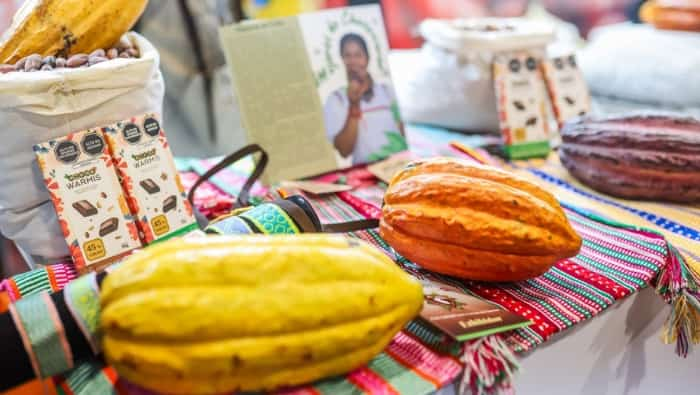Peru’s agricultural export sector is experiencing impressive growth, thanks to the strong performance of both traditional and non-traditional products. According to the Ministry of Agrarian Development and Irrigation (MIDAGRI), agroexports have continued their upward trajectory, reaching a total of USD 9.68 billion in sales during the first ten months of 2024, marking a significant 22.5% increase compared to the same period last year. With this momentum, projections indicate that food exports could reach USD 12 billion by the end of the year, a testament to the country’s expanding agricultural trade.
Traditional Agroexports: A Significant Surge
Peru’s traditional agroexports, which include key products like coffee and sugar, have seen a remarkable surge. These exports amounted to USD 1.003 billion, reflecting an increase of 50.2% compared to 2023. This growth was primarily driven by the higher demand for unroasted coffee (USD 917 million) and other cane sugars (USD 22.6 million), which grew by 60.9% and 199.7%, respectively. Together, these products accounted for a substantial 93.7% of traditional agroexports.
Non-Traditional Agroexports: A Leading Force in Growth
Non-traditional agroexports, which encompass a diverse range of products, generated USD 8.681 billion, a 19.9% increase from the same period in 2023. The most dynamic products within this category were fresh blueberries, avocados, and fresh grapes, all of which contributed significantly to the total export value. Specifically, fresh blueberries generated USD 1.64 billion (18.9% of the share), followed by avocados with USD 1.24 billion (14.2%), and fresh grapes with USD 679 million (7.8%).
Other notable products included raw cacao beans (USD 653 million), fresh asparagus (USD 303 million), citrus fruits (USD 251 million), fresh mangoes (USD 202 million), animal feed (USD 187 million), unground paprika (USD 115 million), and quinoa (USD 107 million). These 10 products alone accounted for 61.9% of the non-traditional agroexport value, underscoring the sector’s diversity and the growing international demand for Peruvian agricultural products.
The most impressive increases in sales were seen in products like fresh blueberries (+52.2%), raw cacao beans (+273.9%), and avocados (+29.0%). Additionally, cacao butter and cacao paste saw exceptional growth, with cacao butter with high acidity rising by 515.8%, while lower-acid cacao butter also showed a remarkable 419.7% increase.
Fruit and Vegetable Exports: Dominating the Agroexport Sector
In terms of product categories, fruits and vegetables were the strongest performers, reaching USD 5.157 billion, or 59.4% of the non-traditional agroexports by the end of October 2024. This represents a 15.7% increase compared to 2023. Fruits such as blueberries and avocados played a pivotal role in this growth, with fresh fruits continuing to dominate Peru’s export landscape.
Top Export Markets
Peru’s agricultural exports are in high demand across a wide array of global markets. The top ten destinations for Peruvian agroexports include the United States, the Netherlands, Spain, Chile, the United Kingdom, Ecuador, Mexico, Germany, China, and Belgium. Collectively, these countries accounted for 75.9% of Peru’s total agricultural exports in the period from January to October 2024.
The United States remains Peru’s largest market, followed by the Netherlands and Spain. This diverse range of markets highlights the international appeal of Peru’s agroexport offerings, driven by the increasing global demand for fresh, high-quality produce.
Trade Surplus and Export Growth
The agrarian trade balance has shown impressive results in 2024, registering a surplus of USD 4.465 billion, a remarkable 71.1% increase from the same period in 2023. This growth can be attributed to a significant rise in export values, with agroexports increasing by USD 1.777 billion compared to 2023.
In the month of October alone, the total value of agroexports reached USD 1.614 billion, marking a 29.5% increase from the USD 1.247 billion recorded in October 2023. The traditional agroexports accounted for 11.4% of the total exports, while the non-traditional products made up the remaining 88.6%.
October’s Exceptional Growth
October was a standout month for Peru’s agroexports, with sales of traditional products reaching USD 184.3 million, a 31.5% increase from the same month in 2023. The major contributor to this growth was unroasted coffee, which generated USD 179.3 million, accounting for the vast majority of the traditional agroexport value. Cane sugar exports also saw a notable increase, rising by 7.6% to USD 2.3 million.
On the non-traditional side, exports reached USD 1.43 billion, a 29.2% increase from October 2023. Fresh blueberries remained the top performer, contributing USD 653 million (45.7% of the total non-traditional exports), followed by fresh grapes (USD 162 million, 11.3%) and raw cacao beans (USD 63 million, 4.4%). These products, along with fresh asparagus, cacao butter, and other high-demand items, demonstrated the continued strength of Peru’s agricultural export sector.
Regional Growth and Future Outlook
Peru’s regional performance in agroexports has also been noteworthy. All but three of the country’s 24 departments saw growth in the first ten months of the year. The most significant gains were observed in the highland regions, with exports growing by 65.9%, followed by the Amazon region with a 45.8% increase and the coastal region, which experienced an 18.2% growth.
These regional disparities highlight the diverse agricultural strengths across Peru’s geography. The highlands are known for their production of products like quinoa and cacao, while the Amazon region is a key source of fruits like bananas and tropical berries. The coastal regions remain dominant in the export of fresh fruits and vegetables, particularly blueberries, avocados, and grapes.
In conclusion, Peru’s agroexport sector is experiencing robust growth, driven by both traditional and non-traditional products. The strong performance of fruits, vegetables, and other high-demand items has positioned Peru as a global leader in agricultural exports. With a continued focus on quality, innovation, and expanding markets, Peru is set to reach new heights in agroexport growth, potentially surpassing the USD 12 billion mark by the end of 2024. As demand for Peruvian agricultural products continues to grow worldwide, the future of Peru’s agroexport industry looks exceedingly promising.



